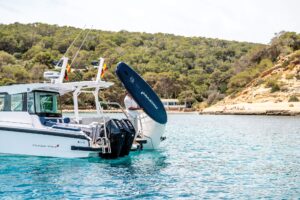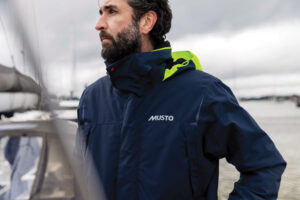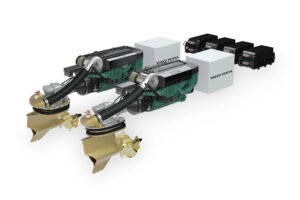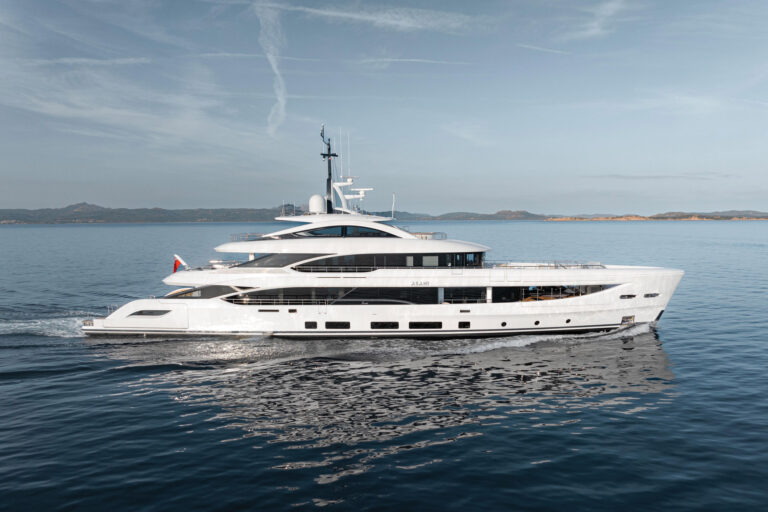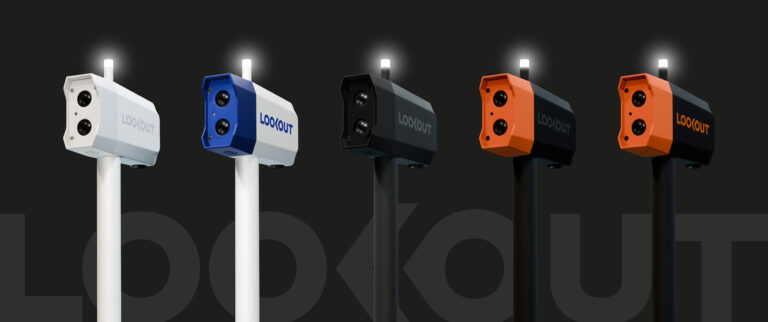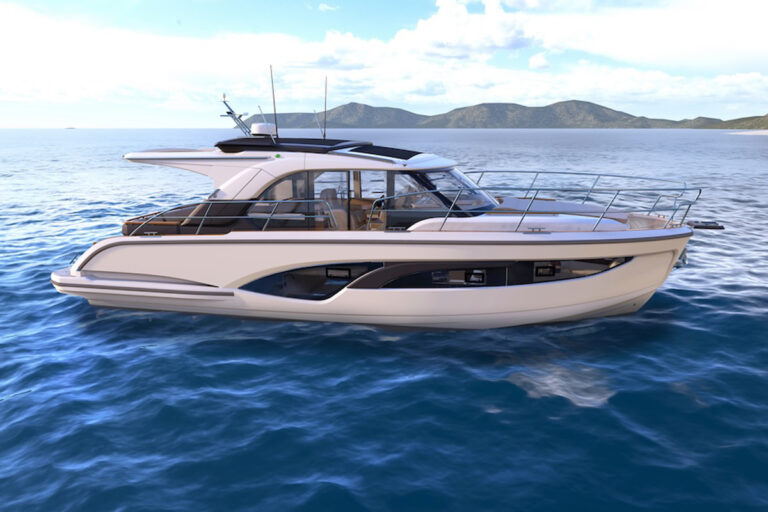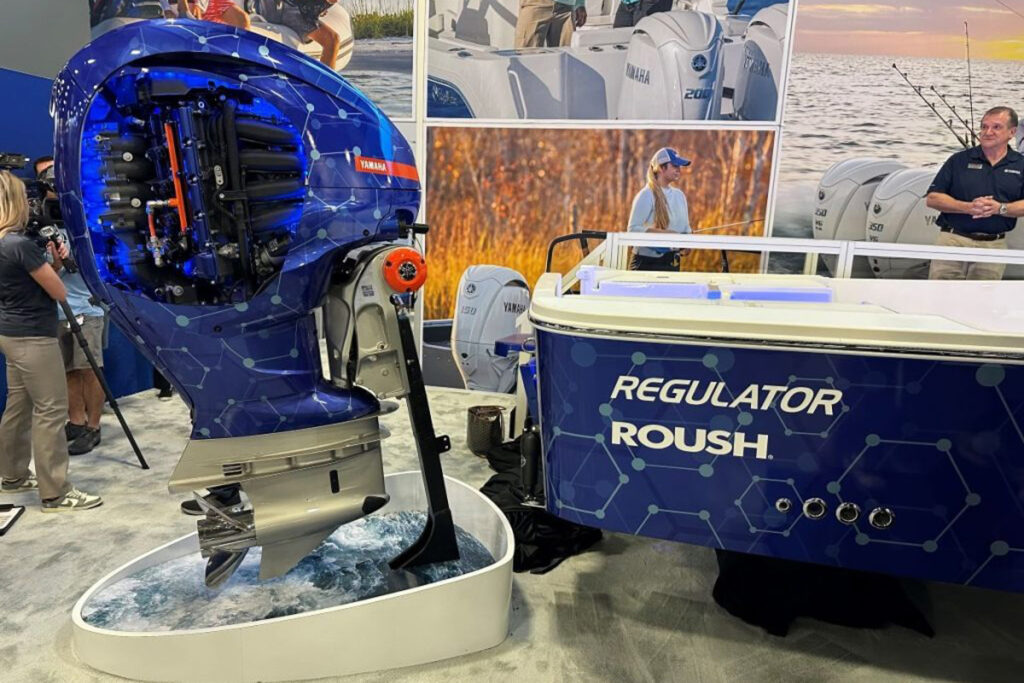
In a bold move toward innovation and sustainability, Yamaha continues its development and testing of a hydrogen-powered outboard engine for recreational boats, along with a prototype fuel system. The effort is part of Yamaha’s long-term goal of achieving carbon neutrality by developing a variety of technology-based solutions.
Joining Yamaha’s efforts is a familiar name in the performance world—Roush—as well as longtime boatbuilding partner Regulator Marine. A 26-foot Regulator XO center console is the test vessel for the new engine and fuel system.
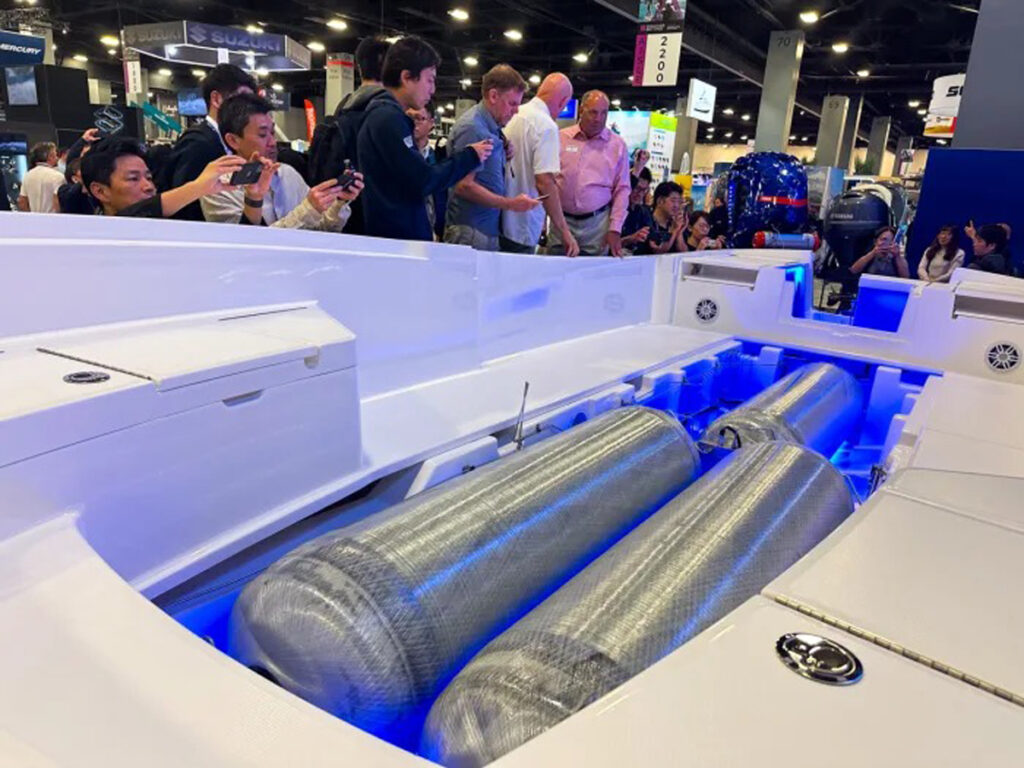
According to Yamaha, the engine itself isn’t a radical departure from what it currently produces for the recreational market. Modern combustion engines all use the same general mechanical principles to harness energy, whether from gasoline, diesel, liquid natural gas or hydrogen fuels. But since hydrogen lacks a carbon molecule, in theory it’s one of the cleanest alternative fuel sources in development. Since a small amount of oxygen becomes fused with hydrogen in the combustion process, the only emissions byproduct is water—H20. However, because of hydrogen’s low-energy density, it must be compressed to between 5,000 and 10,000 psi to achieve viability as a fuel source. And range is limited since it’s currently necessary to store large amounts of hydrogen.
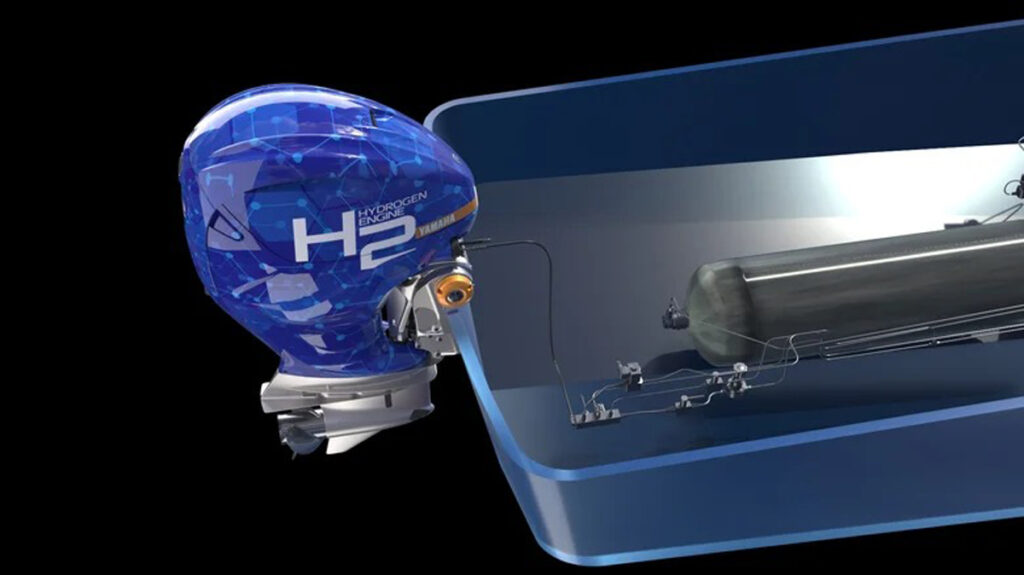
On the test vessel, Regulator retooled a prototype of its 26-foot XO center console in order to fit the Roush-developed fuel system, sacrificing most of the forward storage and fish boxes to accommodate the large hydrogen storage tanks. The boatbuilder noted that, should hydrogen prove to be an effective alternative to conventional fossil fuels, its vessels could be entirely redesigned around the storage tanks.
These efforts toward the development of a sustainable fuel source align with Yamaha’s broader goal of achieving company-wide carbon neutrality by 2050, while also striving to maintain high levels of performance and reliability.

